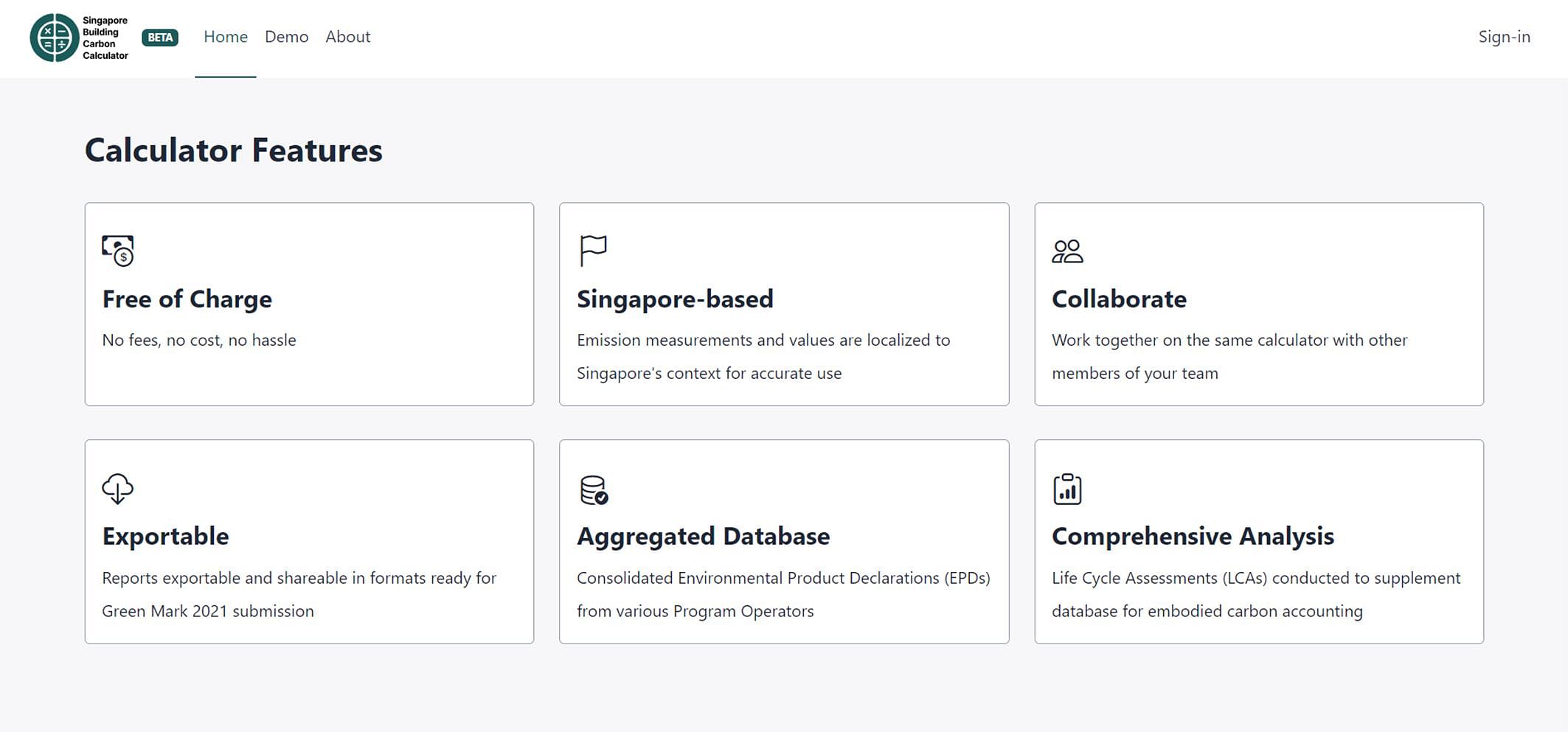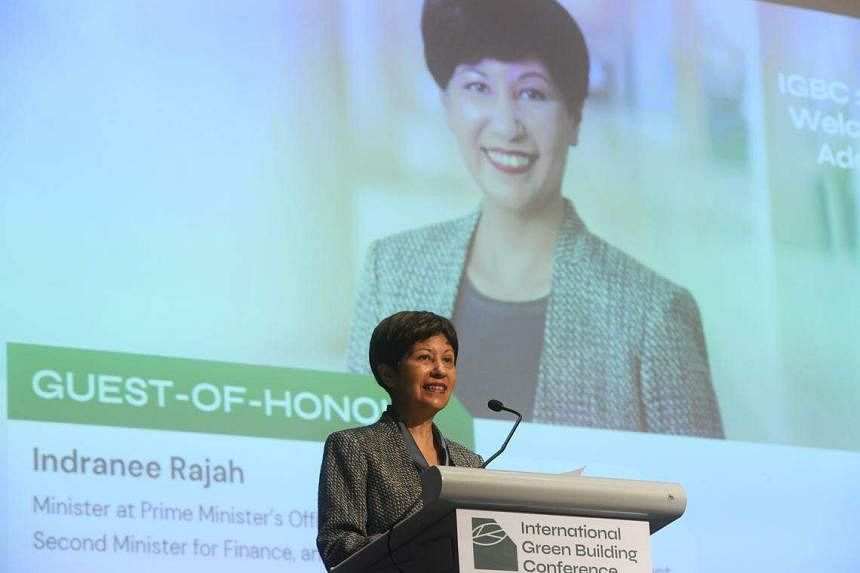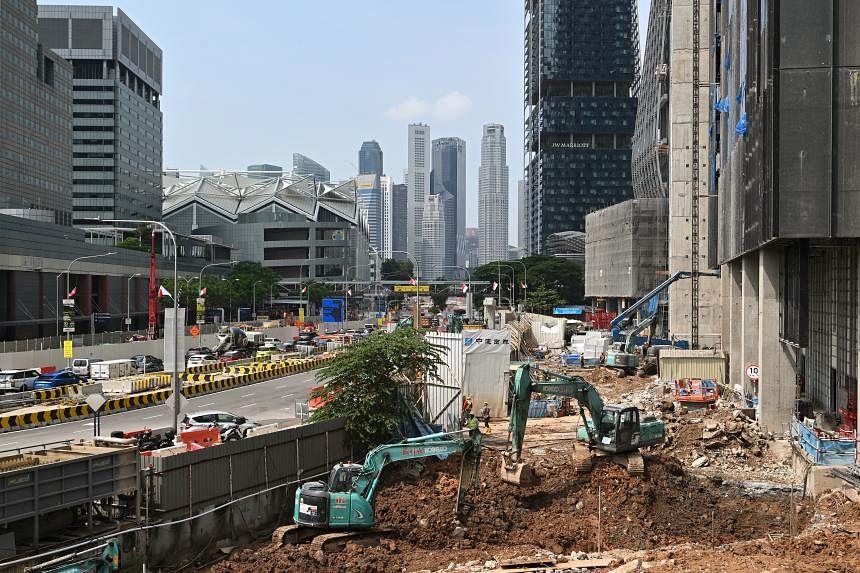SINGAPORE - More decarbonisation initiatives, including a carbon calculator and a revised carbon services certification scheme, have been rolled out for the building and construction sector as Singapore works towards achieving net-zero carbon emissions by 2050.
The initiatives were announced at the International Green Building Conference on Monday.
Engineers and developers in the sector can now access the free Web-based Singapore Building Carbon Calculator to measure the invisible emissions behind the construction of buildings and urban structures.
Such emissions are known as embodied carbon – greenhouse gases that result from the extraction, creation and transportation of building materials, as well as the construction of buildings.
Embodied carbon contributes 11 per cent to global emissions and is about 30 per cent of emissions for buildings.
In Singapore, embodied carbon can account for up to 40 per cent of emissions over a building’s lifetime, since the life cycle of buildings tends to be shorter with urban renewal.
Yet, the concept of embodied carbon is relatively nascent in the building and construction sector in the Republic as the focus has been on addressing the remaining 60 per cent – the carbon emitted during the building’s operation, noted Mr Bryan Ong, assistant manager at the future of building and infrastructure division of JTC Corporation.
Mr Ong is part of a JTC team that created the Singapore Building Carbon Calculator in partnership with the Building and Construction Authority (BCA) and the Singapore Green Building Council (SGBC).
Embodied carbon calculation is usually done at the building design stage.
But it can also be used for existing buildings that will undergo major renovation or retrofitting, said JTC chief sustainability officer Tan Chee Kiat.
Previously, the industry relied on similar measuring tools from places such as North America and Europe, but the Singapore carbon calculator will be localised.
Mr Tan explained that the emissions from transporting building materials and the sources of energy used during construction may differ abroad.
In Singapore, most building materials are imported and shipped in.
In larger countries, the distance between a concrete factory and a construction site might be shorter.
Said Mr Ong: “Through the launch of the Singapore Building Carbon Calculator, we aim to reduce up to 30 per cent of the time needed to do embodied carbon calculations for building projects.
“We also hope to achieve an at least 50 per cent uptake in embodied carbon accounting.”
Ms Melissa Lok, the head and sustainability strategist at local company Building System and Diagnostics, noted that concrete, glass and steel generally hold the largest carbon footprint for building projects.
To reduce embodied carbon, developers and consultants may consider switching to greener construction materials or concrete made from captured carbon dioxide, she said.
Carbon dioxide that is captured from the atmosphere and stored can help reduce heat and mitigate climate change.
For industrial buildings here, the benchmarked value of embodied carbon is 2,500kg of carbon dioxide for every sq m.
To reduce embodied carbon, it is encouraged to keep emissions below 2,500kg, said Mr Tan.
The carbon calculator will be further developed to gather data on embodied carbon from key construction materials, like concrete and steel, using the Concrete Environmental Product Declaration (EPD) generator that was also launched at the two-day conference, held at Raffles City Convention Centre from Monday.
The EPD standardises environmental information on similar products so that they can be compared.

Officiating the conference on Monday, Second Minister for National Development Indranee Rajah announced a career conversion programme for sustainability professionals for the built environment.
This collaboration between Workforce Singapore, SGBC, BCA, Singapore Polytechnic and industry players will support individuals to reskill and take on sustainability reporting, which is growing in demand.
In addition, a certification scheme for environmental sustainability services and energy performance contracting services, when existing buildings are retrofitted for greater energy efficiency, will be revised to four tiers indicating levels of capability.
The Singapore Green Building Services certification, under the SGBC since 2012, allows property developers to identify the correct expertise to steer their projects towards getting a green building certification.
Explaining why the certification scheme was revised, SGBC president Lee Ang Seng said: “Back then, over 10 years ago, green building was still a relatively new and nascent design development approach.
“But today, many of our firms have developed deep and specialised capabilities, and have a strong track record in delivering excellent Green Mark and green building projects.”

Noting that about 80 per cent of new developments must be of Super Low Energy (SLE) standards from 2030, up from 20 per cent now, Ms Indranee said: “There is still some way to go to reach 80 per cent, so we must continue to press on to make SLE standards the norm.”
There is an increasing emphasis in Asia on green accreditation for construction and buildings, particularly for private investors, who are now mainly funding the construction of buildings and infrastructure projects in the post-Covid-19 era.
“Increasingly, there’s a demand for PPP, or public-private partnership. And the private investors are very sensitive to the requirement for being green, because they have to answer to their shareholders and to the investors – and sometimes not just investors and shareholders, but their reputation in how they are perceived,” said Ms Indranee.
“So I think that this momentum will only increase, and contractors and developers who do not pay attention to this will be left behind.”

